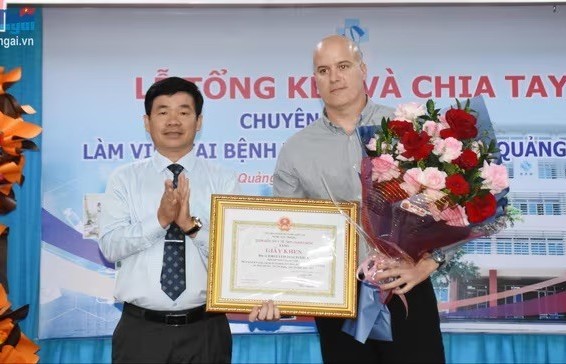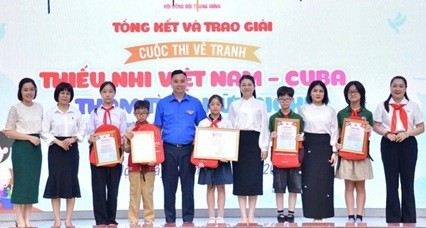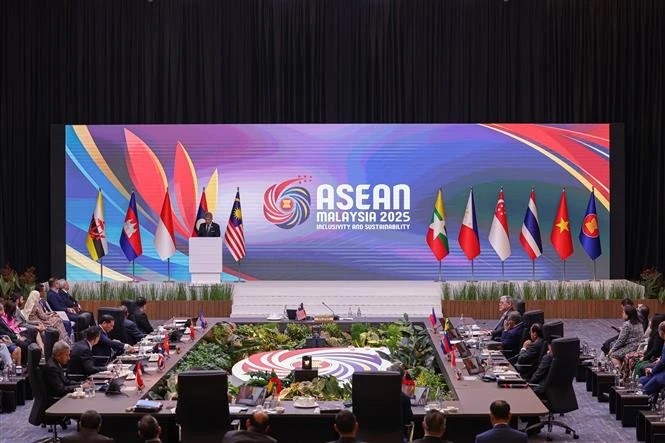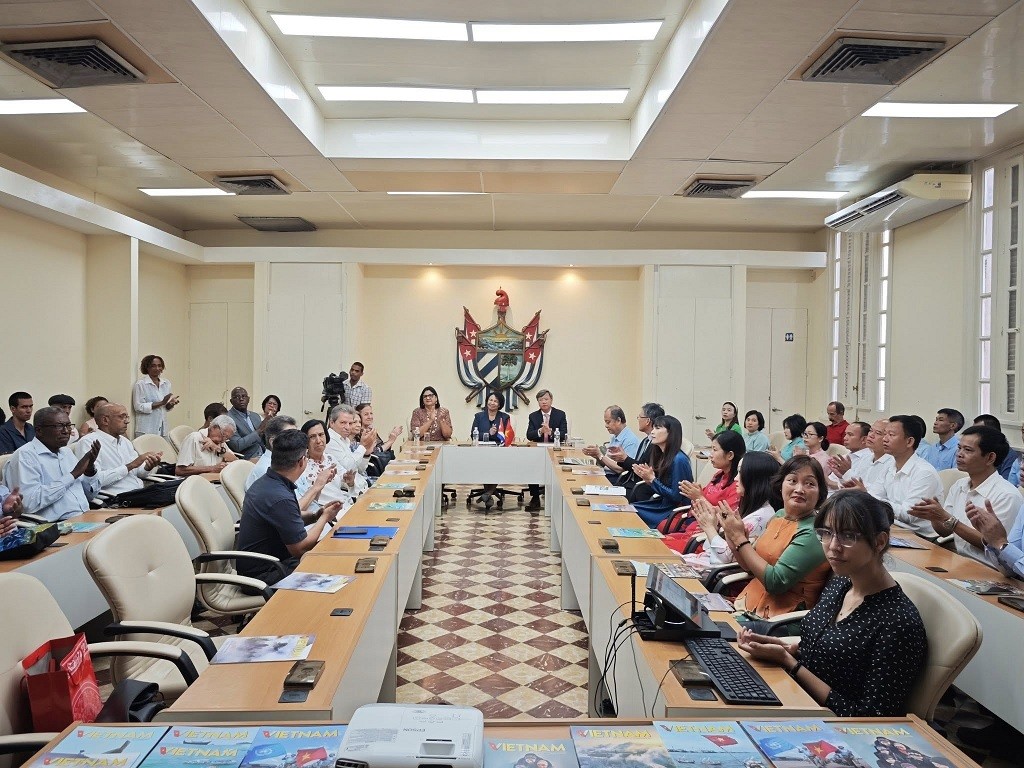Vietnam News Today (Oct. 1): Hoi An Looks to Join UNESCO’s Global Creative City Network
| Vietnam News Today (Oct. 1) notable headlines Hoi An looks to join UNESCO’s global creative city network Vietnam – RoK tourism cooperation: two-way exchange of tourists for sustainable development Japanese investment focused in southern localities Special buses run in HCM City to promote Vietnam-Cuba solidarity Transformation needed for the tourism industry Can Tho seeks cooperation with French partners Vietnamese children around the world enjoy Mid-Autumn Festival Marine economy center in south-central region Forum discusses digital, green transformation for sustainable development |
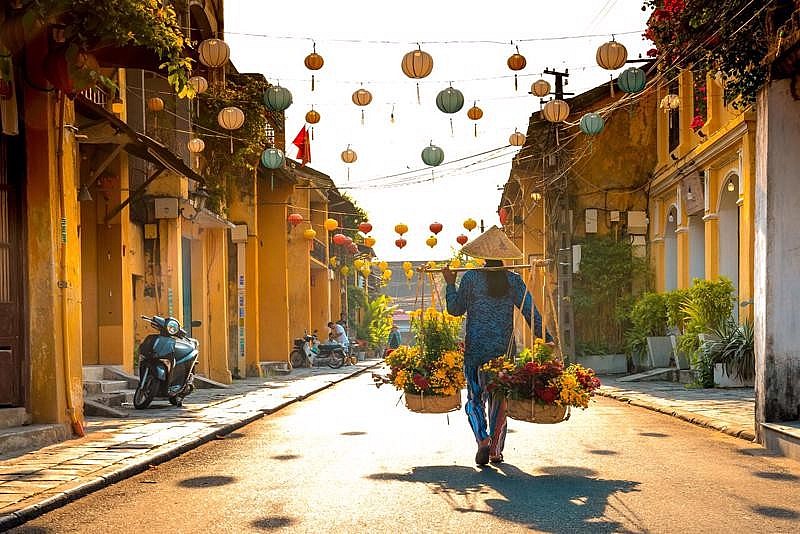 |
| Photo: vneconomy |
Hoi An looks to join UNESCO’s global creative city network
Hoi An ancient town in Quang Nam province has sent documentation to UNESCO on securing membership of the global creative city network. If approved, Hoi An would be the second city in Vietnam, following Hanoi, to join the network. Cities hoping to gain membership are expected to place creativity and cultural industries at the heart of their development plans.
Over the past 500 years, people in the Thanh Ha pottery village in the ancient town of Hoi An have created a range of products that serve daily requirements. Local people hope such crafts will continue to be preserved through the generations.
Hoi An has been home to over 100 traditional crafts since the 17th century, when it was a vibrant international trading port and shipped its arts and crafts all over the world, cited VNA.
With efforts from local people and the government to keep the villages’ fires burning, Hoi An is a strong candidate for the UNESCO global creative city network.
Hoi An is a source of inspiration for artists, artisans, and local people in upholding traditional arts and crafts. These trades, in turn, thrive and create sustainable livelihoods for local people. This upwards spiral is a key qualification for cities within UNESCO’s global creative city network.
Joining the global creative city network will not only help Hoi An inherit its ancestors’ efforts but also boost sustainable development by using natural resources and protecting the environment.
Vietnam – RoK tourism cooperation: two-way exchange of tourists for sustainable development
The Republic of Korea (RoK) has always been a key tourist market in Vietnam. On the contrary, Vietnamese tourists always choose the RoK as their favourite destination. Only when the exchange of tourists between the two sides can be accelerated, the Vietnam-RoK tourism relations develop sustainably.
Enhanced bilateral tourism cooperation
This was the emphasis of Chairman of the Vietnam Tourism Association (VITA) Vu The Binh, at a signing ceremony of the cooperation between the VITA and the Korea Tourism Organisation (KTO), to boost the tourism cooperation between Vietnam and the RoK in Hanoi, on September 28.
Chairman of the VITA Vu The Binh said the signing ceremony reaffirmed the close cooperation between the VITA and the KTO. Previously, since the KTO set up a representative office in Vietnam, the two sides have promoted their cooperation; however, after the COVID-19 pandemic outbreak and until now, this event has been the starting point for a new period of cooperation between the tourism sectors from the two countries with many deepened innovations.
“The RoK is always a key tourist market of Vietnam. On the contrary, Vietnamese tourists always choose the RoK as their favourite destination. This result is thanks to the long-standing good relationship between the two countries, as well as the close and growing cooperation between the cultural and tourism industries of the two countries”, Binh said.
The VITA’s Chairman said the RoK is among the markets where the number of tourists to Vietnam can grow quickly. Since the beginning of the year, a wide variety of practical activities were held to promote new tourism products to attract Korean visitors. After the outbreak of COVID-19, many things have changed, but for Korean tourists, the trend of sports tourism has been developing very strongly. Korean tourists have been very fond of golf tourism in Vietnam. In 2019, there were 1 million Korean tourists playing golf in Vietnam. It is hoped that the same number will be achieved this year, he added.
Lee Jae Hoon, Chief Representative of the KTO in Vietnam, said the friendship and cooperation between Vietnam and the RoK over the past 31 years has achieved extremely valuable results, including the strengthening of cooperation in all fields of politics, economics, society, and culture. In particular, tourism plays a very important role in promoting exchange between the two countries.
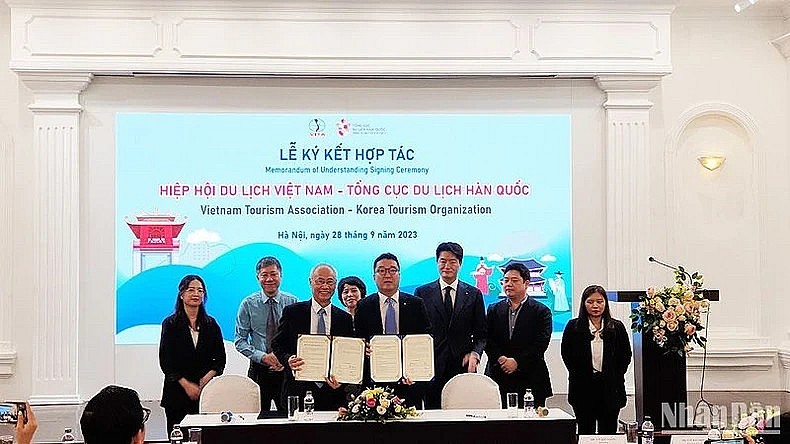 |
| The signing ceremony of cooperation between the VITA and KTO. Photo: NDO |
Through the signing of this memorandum of understanding, it is hoped that the two sides can actively exchange information related to tourism, as well as human resources, market trends, and tourism policies in the two countries, towards contributing to improving the quality of Korean tourism products and serving the needs of Vietnamese tourists better, said Lee Jae Hoon.
Affirming that the exchange of visitors between the two countries will create a very high level in the near future because this is the goal that the KTO, VITA, and the Vietnam National Authority of Tourism (VNAT) are aiming for, Vu The Binh said: "The connection between the two sides is growing. Only when the two-way exchange of tourists is accelerated can Vietnam-RoK tourism cooperation develop sustainably."
The two sides said that immediately after the signing ceremony, the two sides will work with each other to conduct several activities, including forming a delegation to survey the new tourism products in the RoK and the KTO, introducing the RoK’s tourism at the 2023 Vietnam International Travel Mart, in Can Tho City, according to NDO.
Vietnam is RoK’s leading customer market in Southeast Asia
At the signing ceremony, Lee Jae Hoon said by the end of September, it is expected that 310,000 Vietnamese people visit the RoK with an expected recovery rate of about 75% compared to 2019, including about 2,000 Vietnamese people visiting Vietnam during this period.
The number of Vietnamese visitors to the RoK is expected to reach 420,000 by the end of the year, equal to 85% compared to the same period in 2019. Among international tourist markets to the RoK, Vietnam is expected to rank fifth or sixth. In Southeast Asia, Vietnam ranks first in terms of number of visitors in the first 9 months of the year.
Lee added that many travel businesses in the RoK have attractive tour products for Vietnamese tourists. Especially since last March, Muan International Airport has implemented the 15-day visa exemption for Vietnamese tourists traveling in groups, when visiting the southern regions of the RoK such as Jeollanam-do, Jeju, and Yangyang.
The KTO’s Chief Representative expressed his hope that the number of Vietnamese visitors to the RoK will recover quickly in the near future.
On the contrary, according to data from the VNAT, the RoK is still the largest market sending tourists to Vietnam. Korean tourists love Nha Trang, Da Nang, and Phu Quoc. In particular, Da Nang is the most popular destination for Korean tourists because it has many flight routes and is suitable for families and young people. Meanwhile, Hanoi and Ho Chi Minh City are suitable for Korean tourists coming to do business and play golf. Da Lat has begun to attract the attention of Korean tourists.
“We assess that the Vietnamese Government has a very relaxed visa policy for Korean tourists, helping to increase the length of stay of Korean tourists to Vietnam. Therefore, we estimate that from now until the end of the year, the number of Korean visitors to Vietnam will skyrocket," said Lee Jae Hoon.
According to the VITA’s Chairman Vu The Binh, the number of Korean visitors to Vietnam is expected to reach 3 to 3.2 million by the end of this year. In particular, the number of golfers can also reach approximately 1 million, close to pre-pandemic levels.
“In addition, currently many Korean businesses are operating and investing in Vietnam. The number of Koreans working in Vietnam is also very large and that is a large source of domestic tourists. Currently, tourism businesses are also promoting tours to serve Koreans living in Vietnam”, added Binh.
Japanese investment focused in southern localities
Vietnam's southern localities remain attractive destinations for Japanese investors thanks to the completion of infrastructure systems coupled with an improved local business environment.
Recently, many Japanese firms, including Nitto Denko Corporation, Yuwa Co. Ltd., SKM Vietnam Co. Ltd., and AEON Co., Ltd., have received licenses in order to expand their factories in Binh Duong province with a total investment of US$168 million.
At the same time, Matsuya R&D Vietnam Co., Ltd, which specializes in producing medical equipment, has also launched its sixth factory in Dong Nai.
Currently, the southern industrial hub of Binh Duong, is a favorite investment destination of Japanese financiers who have pumped in close to US$6 billion across 350 projects throughout the locality, making the Far East nation the province’s second biggest foreign investor.
Mai Hung Dung, vice chairman of the People’s Committee of Binh Duong, said that the locality views Japan as its strategic investor, leading it to devise various measures in a bid to attract more Japanese investors.
Meanwhile, Dong Nai is hosting 272 Japanese-invested projects with a combined capital of US$5.59 billion. The Far East country ranks third among foreign investors in the province in terms of the project's number and capital, reported VOV.
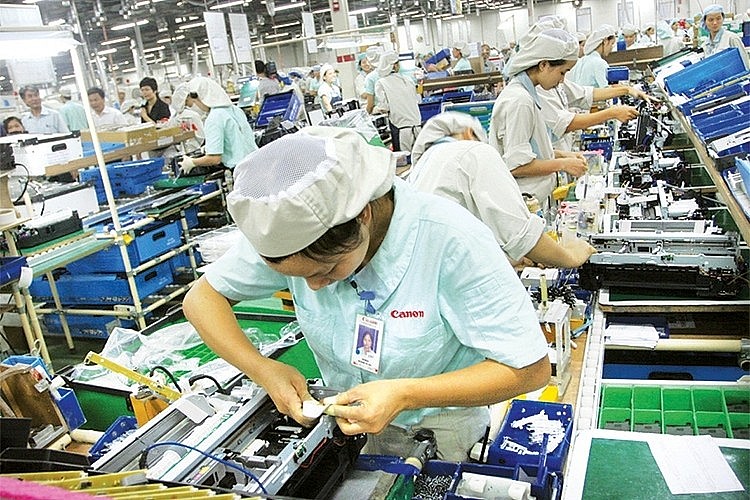 |
| Photo: VOV |
Another favorite southern locality for Japanese investors is proving to be Long An, where 138 Japanese-invested projects valued at US$767 million are operating, making Long An the leading hub for Japanese projects throughout the Mekong Delta region.
Since the beginning of the year, a series of inter-regional infrastructure projects have been launched in the southern region, which is the primary factor that turns the region into a magnet for foreign investors.
The Belt Road No.3 project with a length of 76.3km, crossing four localities of Ho Chi Minh City, Binh Duong, Dong Nai, and Long An, started in June. Construction on the Bien Hoa-Vung Tau expressway project and Phuoc An bridge connecting Cai Mep-Thi Vai port have also been launched, along with the expansion and connections of many national highways.
Moreover, many industrial parks in the southern key economic region have been expanded to create land funds for investors.
The reform of administrative procedures in many localities has also made foreign financiers more confident in doing business in the southern localities.
Experts say that with the removal of bottlenecks in infrastructure and investment environment, southern provinces and cities will attract a strong wave of investment, not only from Japan but also from Western Europe and North America moving forward.
Special buses run in HCM City to promote Vietnam-Cuba solidarity
Two special buses made a trip around Ho Chi Minh City on September 30 to promote the special solidarity between Vietnam and Cuba on the occasion of the 50th anniversary of leader Fidel Castro’s visit to the liberated zone in Quang Tri province (1973-2023).
At a ceremony to launch the bus trip held by the Cuban Consulate General in the city, Consul General Ariadne Feo Labrda stressed that Fidel was the first and only head of state in the world to visit the liberated zone in South Vietnam when the war was still going on.
The visit showed the world that Vietnam was not alone in its struggle and affirmed the unconditional support of the Cuban people for Vietnam, she said.
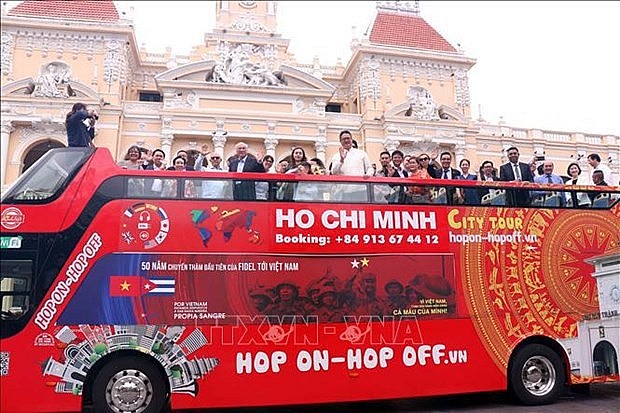 |
| The bus is decorated with pictures of Fidel Castro waving the flag of the National Liberation Front of South Vietnam on Hill 41 in Quang Tri in September 1973. (Photo: VNA) |
Cuban Minister of Construction Rene Antonio Mesa Villafana said the struggle of the Vietnamese people was not only for Vietnam’s own independence but also for the world's revolutionary movement for national liberation.
Vietnam has been, and is still an example and a source of encouragement for Cuba’s struggle, he said.
He highlighted that the Cuba-Vietnam relationship has been expanding across the fields despite the far geological distance, economic difficulties, and even during the COVID-19 pandemic, cited VNA.
Following the ceremony, Minister Rene Antonio Mesa Villafana and the head of the municipal Party Committee’s Commission for Popularisation and Education Phan Nguyen Nhu Khue, along with foreign delegates and representatives from agencies and organizations in HCM City boarded the two buses for the trip around the city.
The buses were decorated with pictures of Fidel Castro waving the flag of the National Liberation Front of South Vietnam on Hill 41 in Quang Tri in September 1973.
Transformation needed for the tourism industry
On this year's World Tourism Day (September 27), the United Nations calls on the world to focus on green investments to build a tourism sector that delivers for people and the planet.
On September 27 and 28, more than 500 government officials and experts from about 120 countries attended activities within the framework of World Tourism Day 2023, taking place in Riyadh, Saudi Arabia. The theme of this year's World Tourism Day is "Green Tourism and Investment", to call for promoting global cooperation for environmental protection and comprehensive and sustainable development of a "smokeless industry".
United Nations Secretary-General Antonio Guterres emphasized that the United Nations recognizes the vital need for green investments to build a tourism sector that delivers for people and the planet.
After a long gloomy period due to the COVID-19 pandemic, bright colours have reappeared on the global tourism picture. The United Nations World Tourism Organisation (UNWTO) said that 700 million tourists traveled internationally between January and July 2023, 43% more than in the same months of 2022.
UNWTO estimates that international arrivals reached 80% of pre-pandemic levels in the first quarter of 2023.
The tourism industry plays an important role in the economy, bringing in revenue, creating jobs, and promoting cultural exchange. However, excessive tourism activities have negative impacts, such as causing environmental degradation, disrupting the lives of indigenous people, and affecting the experiences of tourists themselves. Climate change is also a challenging issue for the tourism industry.
Destinations that attract many tourists in the Mediterranean are places heavily affected by harsh weather. Last summer, in Greece, thousands of tourists had to evacuate from the islands of Rhodes and Corfu, due to heat and forest fires. Rhodes International Airport became a reluctant campsite for tourists. Experts warn that if extreme weather phenomena continue, the European tourism industry will face significant challenges as tourists change their travel habits.
In the context of many challenges, sustainable tourism activities are increasingly encouraged to balance economic benefits with environmental and social responsibilities. Many countries around the world have invested in greening infrastructure, encouraging digital transformation, and preserving culture to develop sustainable tourism, NDO reported.
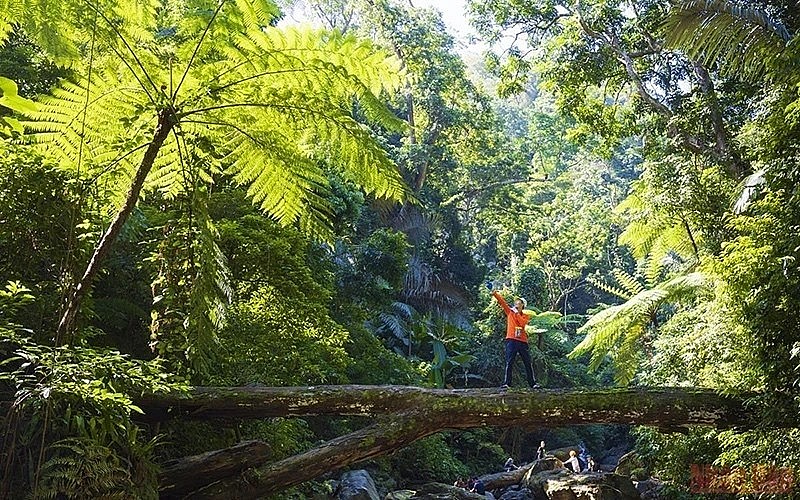 |
| Exploring Dong Chau forest in Quang Binh, Vietnam. (Photo: Kien Tran) |
From 2024, the Bali administration has said that funds collected from a tax of IDR150,000 (US$10) per person, to be levied from all foreign tourists, will be used for waste management and cultural preservation programs.
In Japan, overcrowding with tourists leads to littering and traffic jams. To deal with this problem, the Kyoto city government proposed measures such as: ending the sale of “one-day bus passes”, which allow unlimited bus travel during the day, and promoting the use of “one-day bus/subway passes” to encourage subway use. The city also established a temporary luggage storage area at Kyoto Station, to facilitate visitors to visit attractions without carrying luggage.
Recently, Iceland plans to introduce a tourist tax to help protect its unspoiled nature.
Many other popular locations in Europe such as Berlin (Germany), and Amsterdam (Netherlands) have applied tourism tax. This is also a source of funding for public infrastructure projects, contributing to overcoming damage caused by crowds and supporting sustainable development initiatives.
The COVID-19 pandemic has changed thinking about tourism and shown that the world needs to build a tourism industry that is more flexible, sustainable, environmentally friendly, and more resilient to risks, and crises. According to United Nations Secretary-General Antonio Guterres, tourism is a powerful force for progress and mutual understanding; Investing in tourism means investing in a more sustainable future.
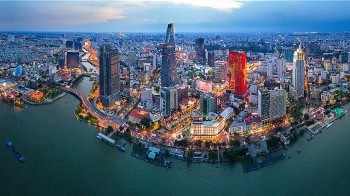 | Vietnam News Today (Sep. 27): Vietnam Enjoys Rise Up Economic Freedom Rankings Vietnam News Today (Sep. 27): Vietnam enjoys rise up economic freedom rankings; Sapa, Can Tho among most attractive autumn destinations: The Travel; India strives to ... |
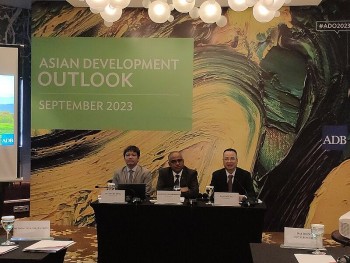 | Vietnam News Today (Sep. 28): Vietnamese Economy Remains Resilient Amid Weakening Global Demand Vietnam News Today (Sep. 28): Vietnam – second biggest exporter of Cambodia; Vietnamese economy remains resilient amid weakening global demand; Mexico praises Vietnam's economic growth ... |
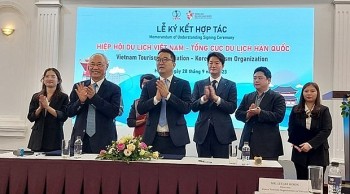 | Vietnam News Today (Sep. 30): Vietnam, RoK Bolster Tourism Cooperation Vietnam News Today (Sep. 30): Vietnam posts trade surplus of US$21.68 billion in nine months; Vietnam, RoK bolster tourism cooperation; Number of foreign tourists to ... |
In topics
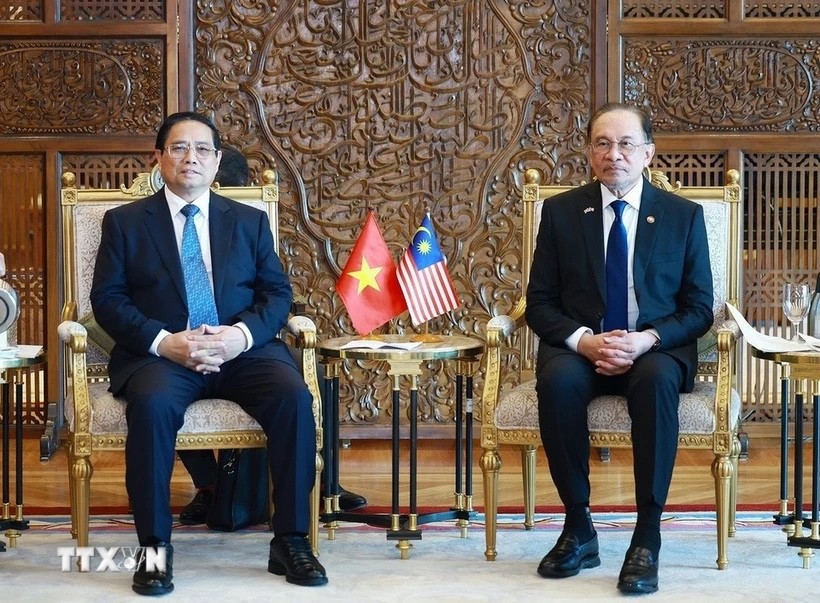 National
National
Vietnam News Today (May 31): Vietnam Strongly Supports Laos’s National Development
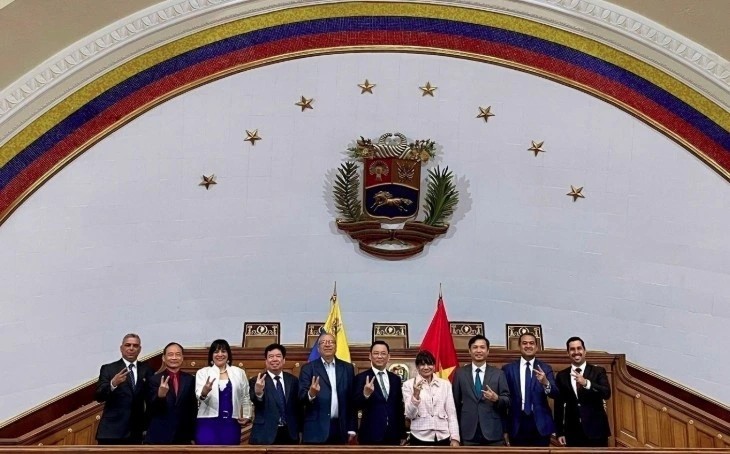 National
National
Vietnam News Today (May 30): Vietnam, Venezuela Reinforce Ties Through People-to-people Diplomacy
Recommended
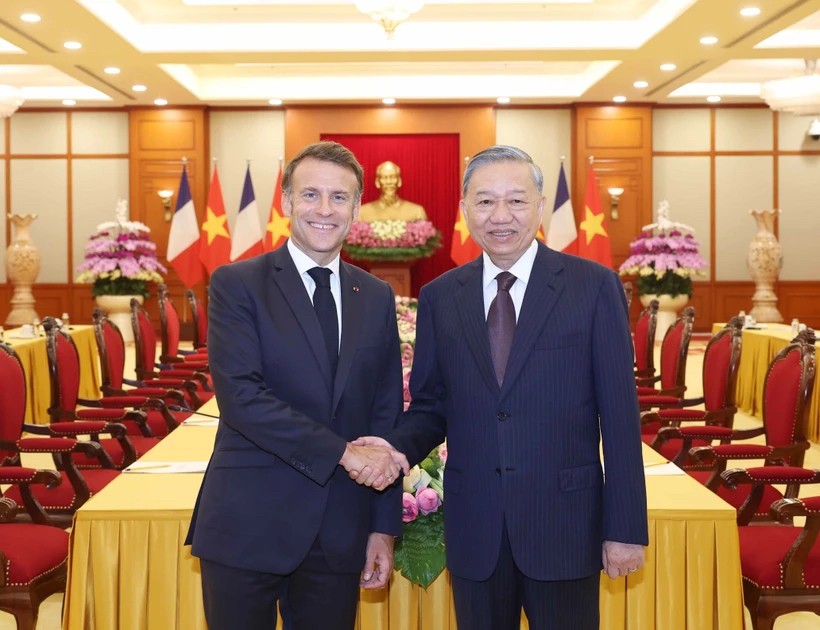 National
National
Vietnam News Today (May 27): Vietnam Treasures Multifaceted Collaboration with France
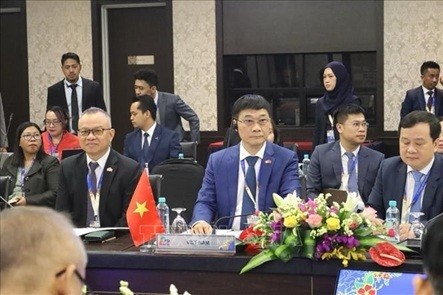 National
National
Vietnam Commits to Building an Inclusive, Sustainable and Cohesive ASEAN
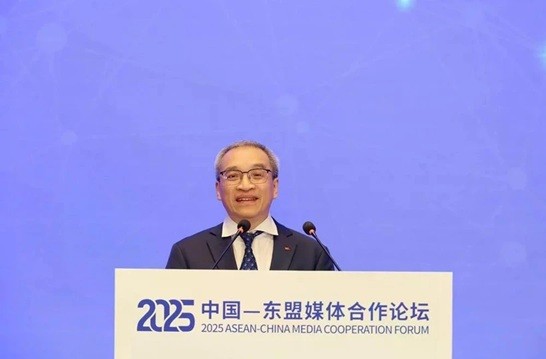 National
National
Vietnam Proposes Vision for Responsible Digital Journalism Cooperation
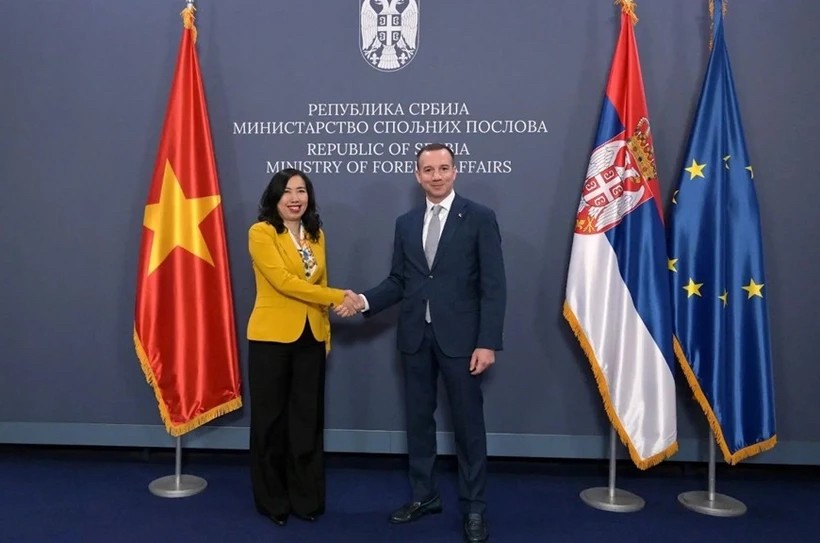 National
National
Vietnam News Today (May 25): Vietnam, Serbia Hold Political Consultation
Popular article
 National
National
Vietnam News Today (May 30): Vietnam, Venezuela Reinforce Ties Through People-to-people Diplomacy
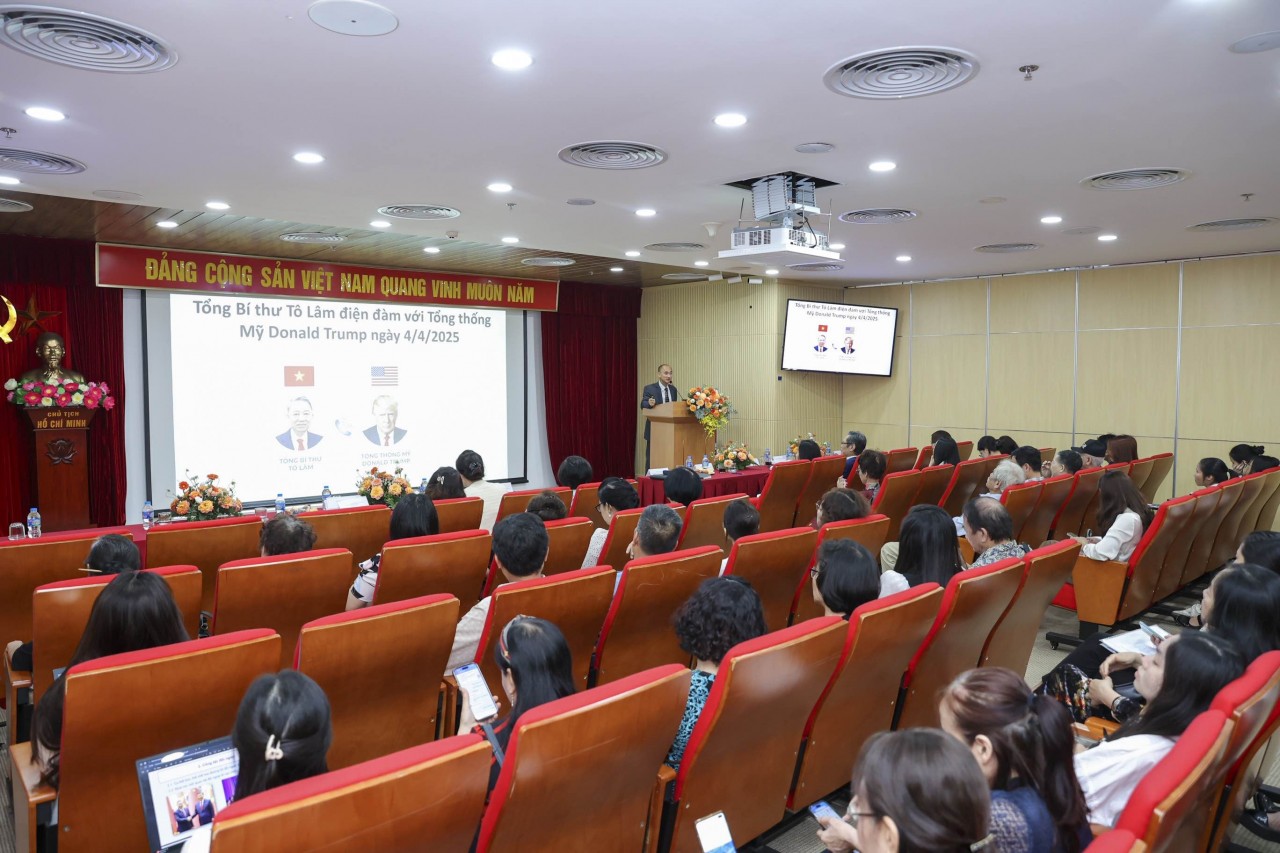 National
National
Vietnam News Today (May 29): Vietnam and Hungary to Expand Cooperation into New Areas
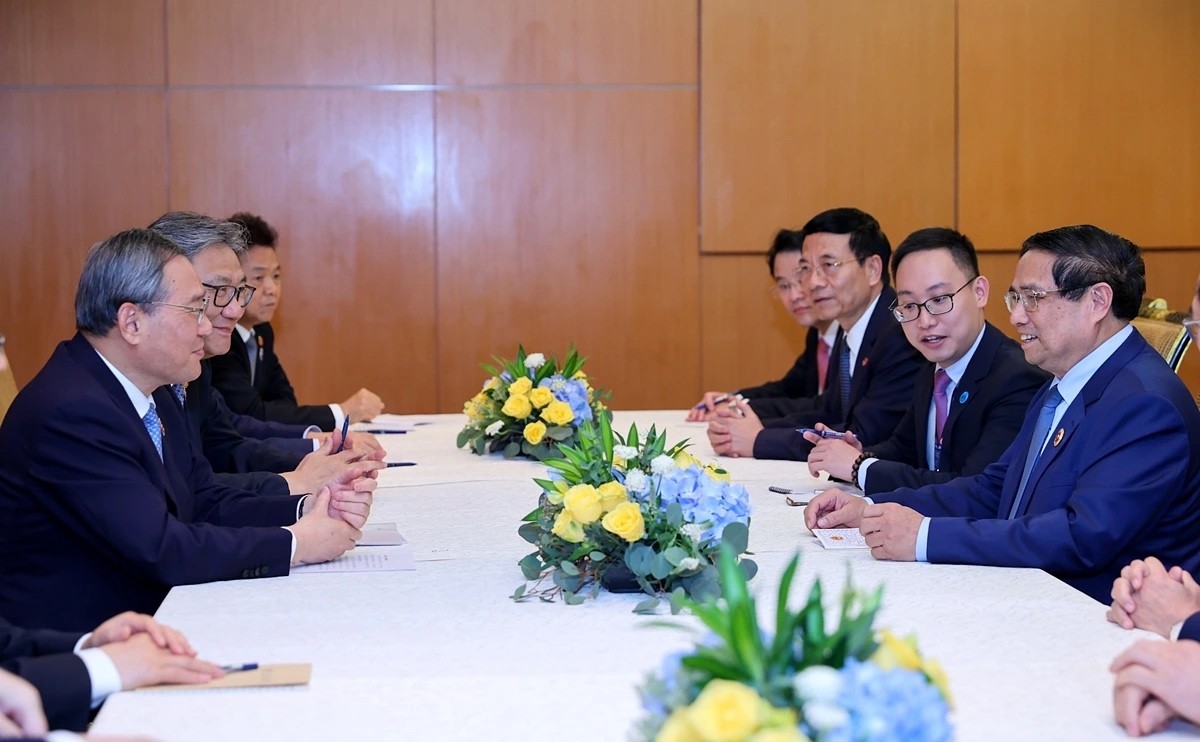 National
National
Vietnam News Today (May 28): Vietnam and China Discuss Strategic Cooperation Orientations
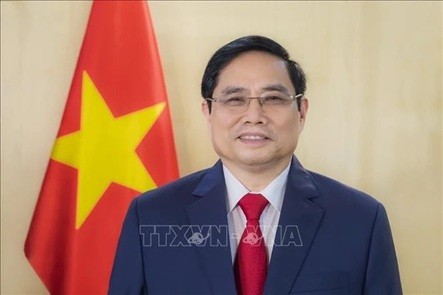 National
National




